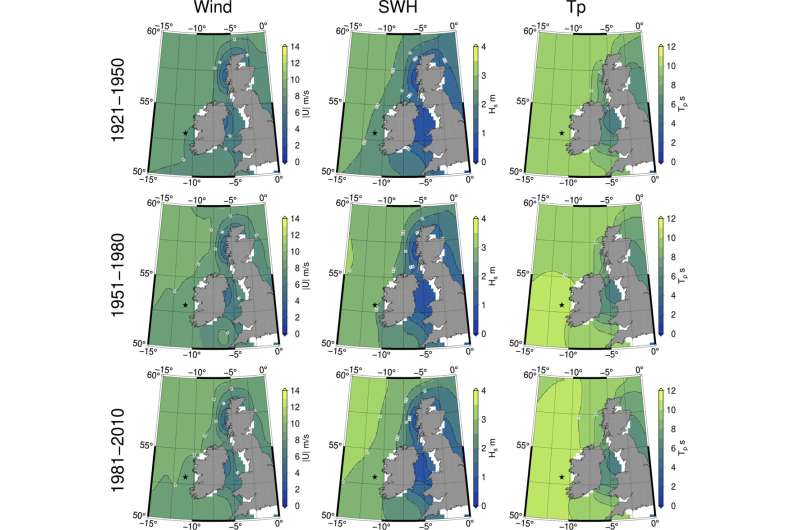
The EOLO group of the University of the Basque Country (UPV/EHU) presents a new method for analyzing the long-term mechanical fatigue of floating offshore wind turbines.
Researcher Alain Ulazia used wind and wave data between 1920 and 2010 from a high-energy site off the west coast of Ireland to analyze how sea conditions evolved and generate a model for calculating the mechanical fatigue that can be sustained by floating wind turbines as a result of these conditions. This mathematical-statistical method makes it possible to calculate the service lifetime of turbines on the basis of the meteorology of a specific site.
In a study published in Ocean Engineering conducted by the EOLO research group of the University of the Basque Country (UPV/EHU) a mathematical-statistical method was developed to enable "the suitability of installing floating wind farms on a specific location" to be determined. For example, whether it is highly likely that the wind turbines will sustain mechanical fatigue or extreme offshore conditions despite the site being a very high-energy one, explained Alain Ulazia, lecturer at the Faculty of Engineering—Eibar.
The researcher said that the most frequently asked question in offshore wind power generation is "what changes (increases or decreases) are going to be brought about in energy production by the weather conditions," in other words, what is examined is how much energy can be produced depending on the weather.
However, the research led by Ulazia went one step further and focused on the mechanical fatigue of offshore wind turbines, in other words, ultimate breakage as a result of repetitive blows and stresses that are not capable of breaking the material on their own. "Sea conditions (wind and waves) can affect the reduction in the service lifetime of floating turbines. In fact, they may affect the duration of some turbine parts more than industrial energy production, and instead of lasting 20 years, they may last 15 years. This may have a decisive impact on the cost and investment of a project."
Marine conditions on a site
The EOLO research group has been working for years on projects related to meteorology, climate and the environment. "We have conducted numerous studies on the long-term link between climate change and renewable energy generation. Taking into consideration the changes that have taken place over several decades, we make historical studies and projections for the future," explained Ulazia.
This study selected a very high-energy location in Ireland: using wind and wave data recorded between 1920 and 2010 in Galway Bay on the west coast of Ireland, they determined the historical changes over these decades using advanced meteorological models, in collaboration with members of the Center for Ocean Energy Research at Maynooth University, Ireland.
These historical data were used to determine the evolution of the offshore conditions and to create a model to represent the long-term fatigue that these conditions would bring about in wind turbines. This model can be used for future projections.
Simulating the floating wind turbine dance
The researchers used simulations to calculate the energy that would be produced by some reference floating turbines in the eight most likely offshore scenarios in Galway Bay and they also saw the mechanical fatigue that would be sustained by some turbine components.
More information: Alain Ulazia et al, Historical trends of floating wind turbine fatigue loads (Ireland 1920–2010), Ocean Engineering (2024). DOI: 10.1016/j.oceaneng.2024.117424
Citation: New method helps determine the suitability of offshore wind turbine sites (2024, June 6) retrieved 6 June 2024 from https://techxplore.com/news/2024-06-method-suitability-offshore-turbine-sites.html
This document is subject to copyright. Apart from any fair dealing for the purpose of private study or research, no part may be reproduced without the written permission. The content is provided for information purposes only.
